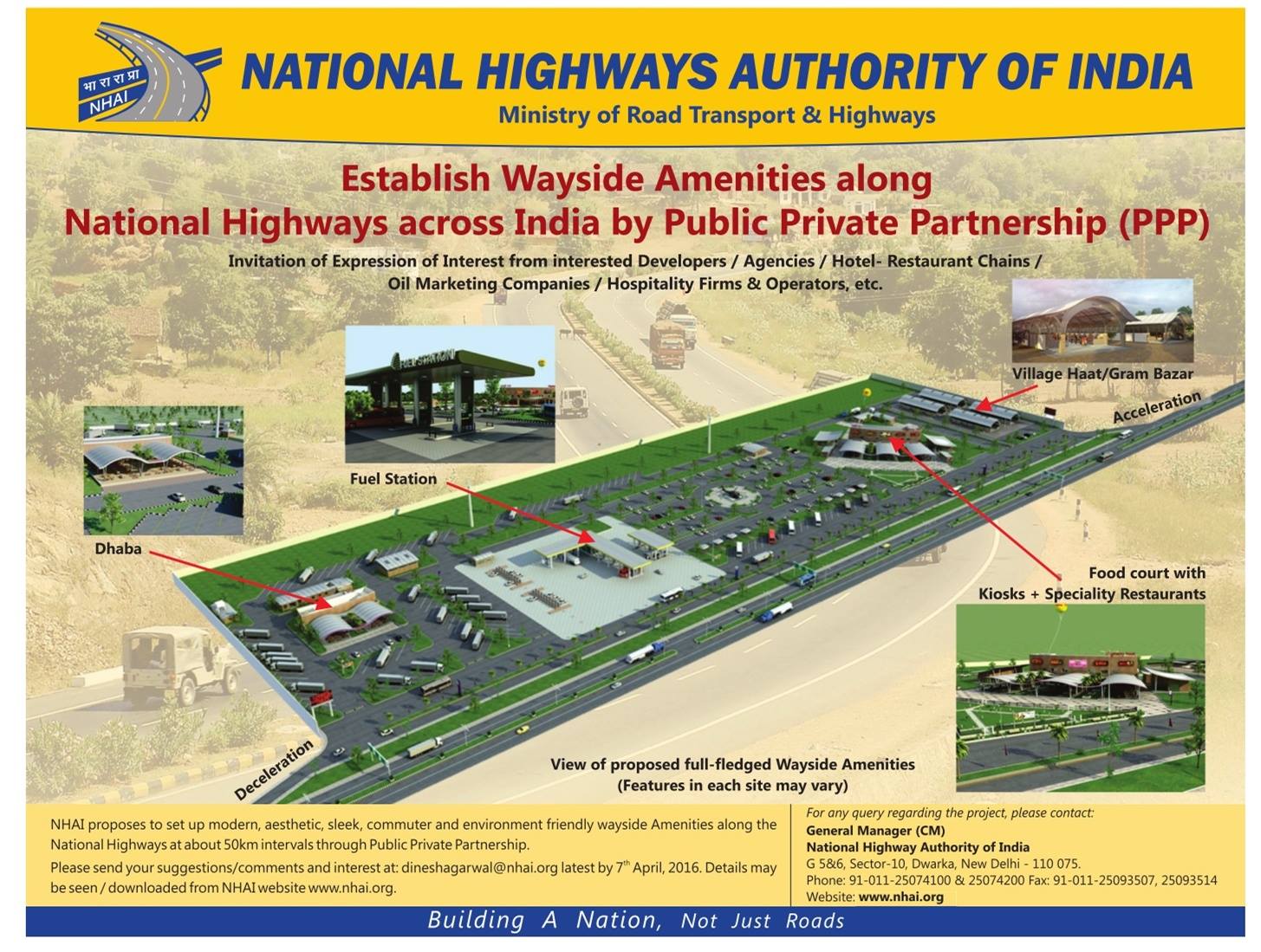By Rahul Mehta
- The Grand Trunk Road was constructed by Sher Shah Suri in 1545 and rebuilt by the British in 1860. But since independence little work was carried out in strengthening our road infrastructure which is the backbone of any country’s holistic development. Most of our roads are unpaved, full of craters and potholed and badly in need of upgradation and repair. The first proactive step in this direction was taken by the NDA government led by Shri Atal Bihari Vajpayee through the highly ambitious golden quadrilateral project launched in 2001. The UPA government admitted in July 2013 before the Indian Supreme Court that the NDA1 regime in five years constructed nearly half of the total highway network laid out in the country during the last 32 years. However, in the last decade confusion, corruption and depression prevailed amongst the lender, developer and authorities over highway projects. This was primarily due to lack of clarity, shortage of funds, skewed risk allocation and inappropriate financing models.In 2014, when NDA returned to power with a thumping public mandate, the whole infrastructure sector was in shambles. The misdoings of the earlier regime could not be righted overnight and the Government decided to carefully analyze and develop a solution which maximized public funds deployment and reduced the quantum of risk for all stakeholders (The Authority, Lender and Developer). In the view of Prime Minister Modi’s commitment to development and “Sabka Saath, Sabka Vikaas”, the NHAI was asked to draft a model of financing for implementing road projects which lowered the pressure on the exchequer and increased private participation in the form of PPP projects. Accordingly, an MCA (Model Concession Agreement) was drafted in April 2015 and has recently been given approval by the Cabinet Committee on Economic Affairs (CCEA) on January 27th, 2016 clearing the way for stranded projects worth Rs. 25,000 Crores.
The National Highways Authority of India (NHAI) is the nodal agency responsible for building, upgrading and maintaining most of the national highways network. It operates under the Ministry of Road Transport and Highways. The National Highways Development Project (NHDP) is a major effort to expand and upgrade the network of highways. NHAI often uses a public-private partnership model for highway development, maintenance and toll-collection.
There were three primary modes of awarding road projects which were in practice earlier.
- BOT (Toll) – Developer bears construction , maintenance and revenue collection risks
- BOT (Annuity) – Developer builds a highway, operates it for a specified duration and transfers it back to the government, which then pays the developer annuity over the period of concession
- EPC – (Engineering, Construction & Procurement) – Developer bears only construction risks and executes the project on behalf of the Government. This is challenging as Government is short of funds to allocate for road projects.
The MCA proposes a new Hybrid Annuity Model (HAM) which is based on DBOT (Design, Build, Operate, Transfer). This will pave the way for NHAI to breathe new life into projects stuck for lack of funding. Under HAM, the Government will provide 40% of the project costs to the developer to start work.
HAM or Design, Build, Operate & Transfer (DBOT)
- Only certain percentage of project cost to be financed by private investor
- Recovered through annuity payments made by the Government commencing from the date of commissioning (10 years in 20 equal installments)
- Balance percentage provided by the Government during construction
- Clauses like traffic determination, projection and grant or viability gap funding to make the project viable would not be there in MCA
Benefits
- Allocation of risks between PPP partners (Govt 40%; Private Partner 60%)
- Private partner continues to bear the construction & maintenance risks
- Only partly bears the financing risks
- Does not bear revenue and inflation risks
- Gets more leverage from the banks because of assured repayments
- Lowers the upfront costs for the developer
- Cash Flow pressure on NHAI gets reduced
- Speedy completion of projects
- Model involves lower equity outlay upfront and substantially higher revenue certainty
- Will encourage select Indian contractors to come back into road construction business where they were struggling to deploy capital in toll based road projects
Future projects planned under HAM
- 2014-15: 3 projects; 576 Kms
- 2015-16: 12 projects; INR 15905 Crores; 1300 Kms (Delhi, UP, Himachal Pradesh, Jharkhand, Maharashtra)
- 2016-17: 15 projects; INR 12185 Crores; 1105 Kms
The rate of new highway construction across India accelerated after 1999, but had slowed in recent years. Policy delays and regulatory blocks reduced the rate of highway construction awards to just 500 kilometers of new road projects in 2013. India had a road network of 47 Lac Kilometers in 2013, the second largest in the world. Still, India has less than 3.8 kilometres of roads per 1000 people, including all its paved and unpaved roads. In terms of quality, all season, 4 or more lane highways, India has less than 0.07 kilometres of highways per 1000 people, as of 2010. These are some of the lowest road and highway densities in the world. With the introduction of HAM we expect to see these figures change rapidly, infusing a boost to the infrastructure sector and PPP model.
(The author is an expert on infrastructure issues, an entrepreneur & social worker)
(The views expressed are the author's own and do not necessarily reflect the position of the organisation)

